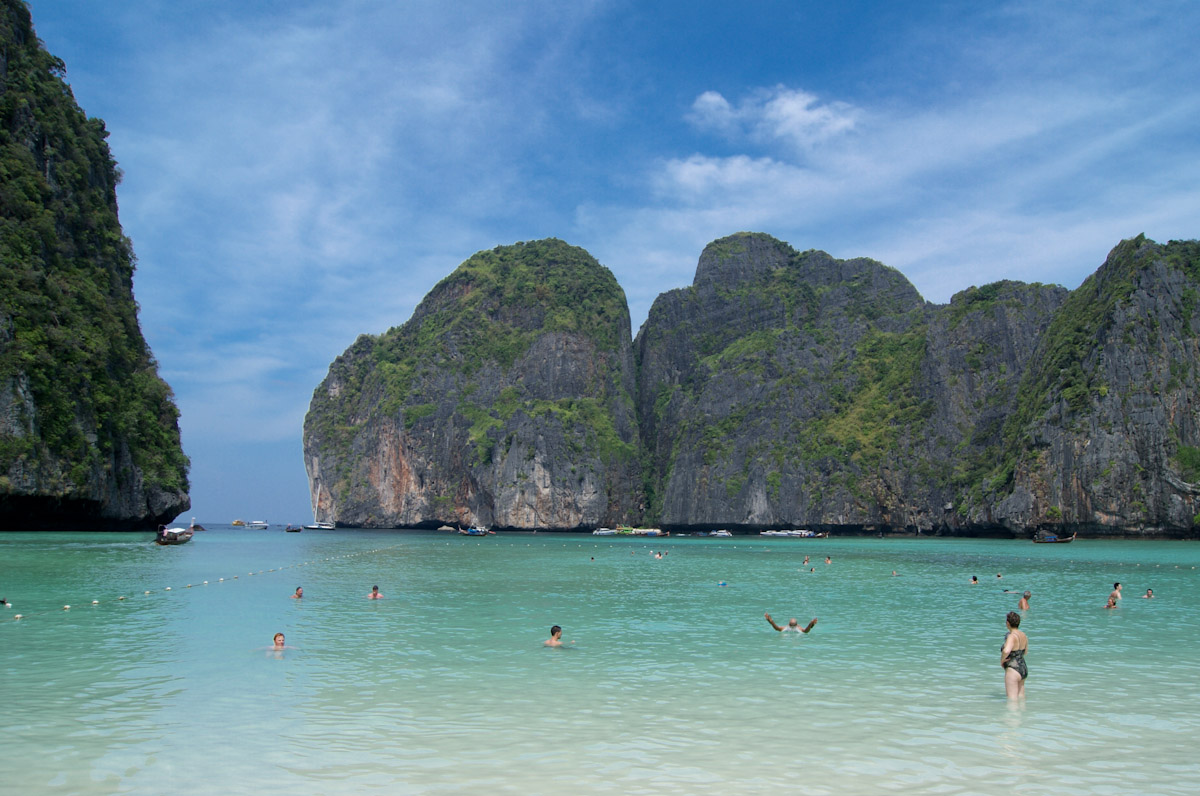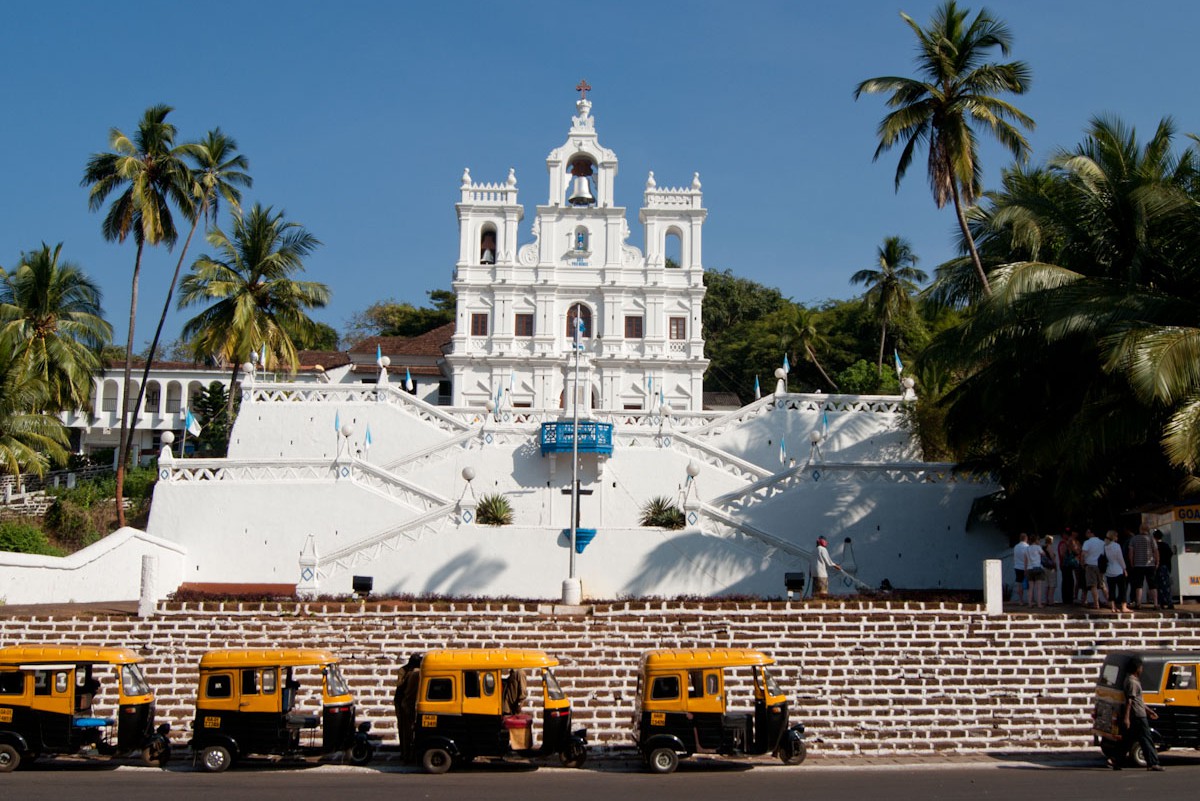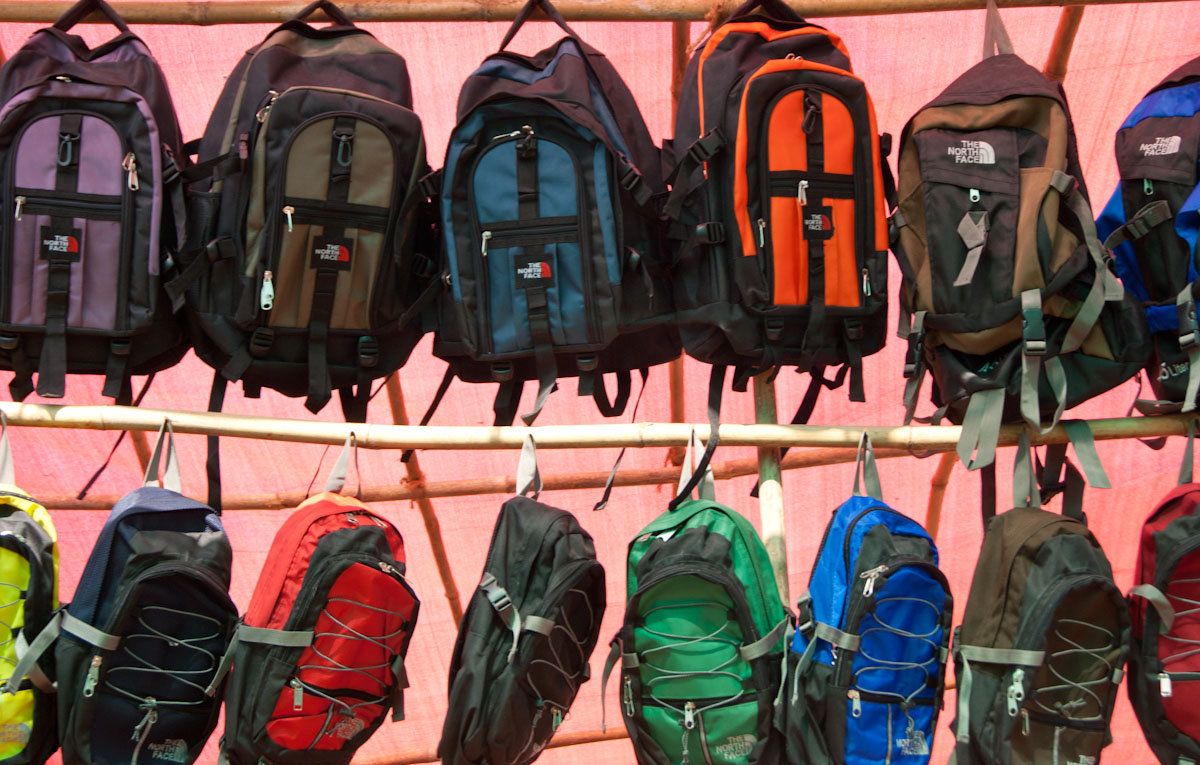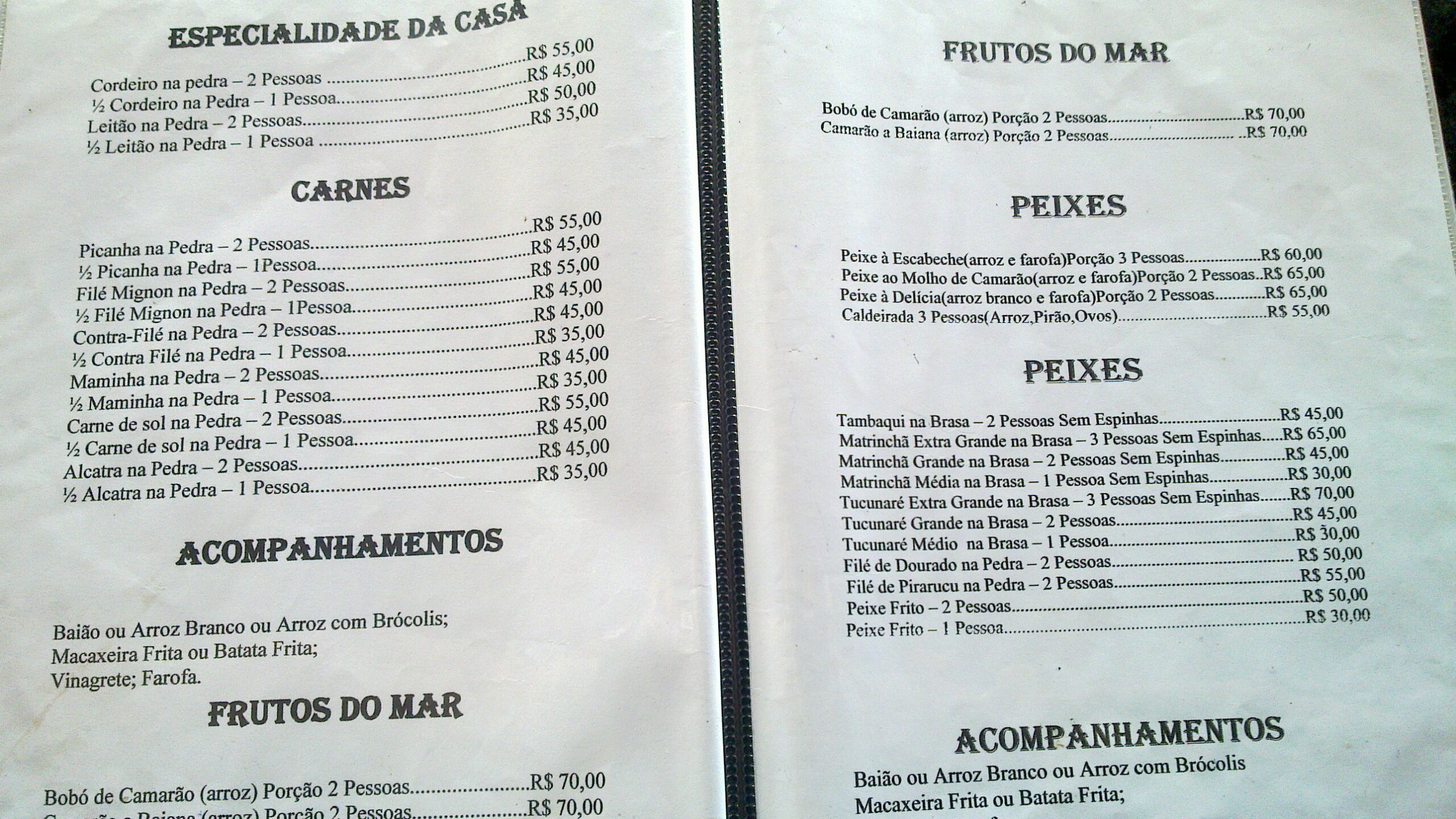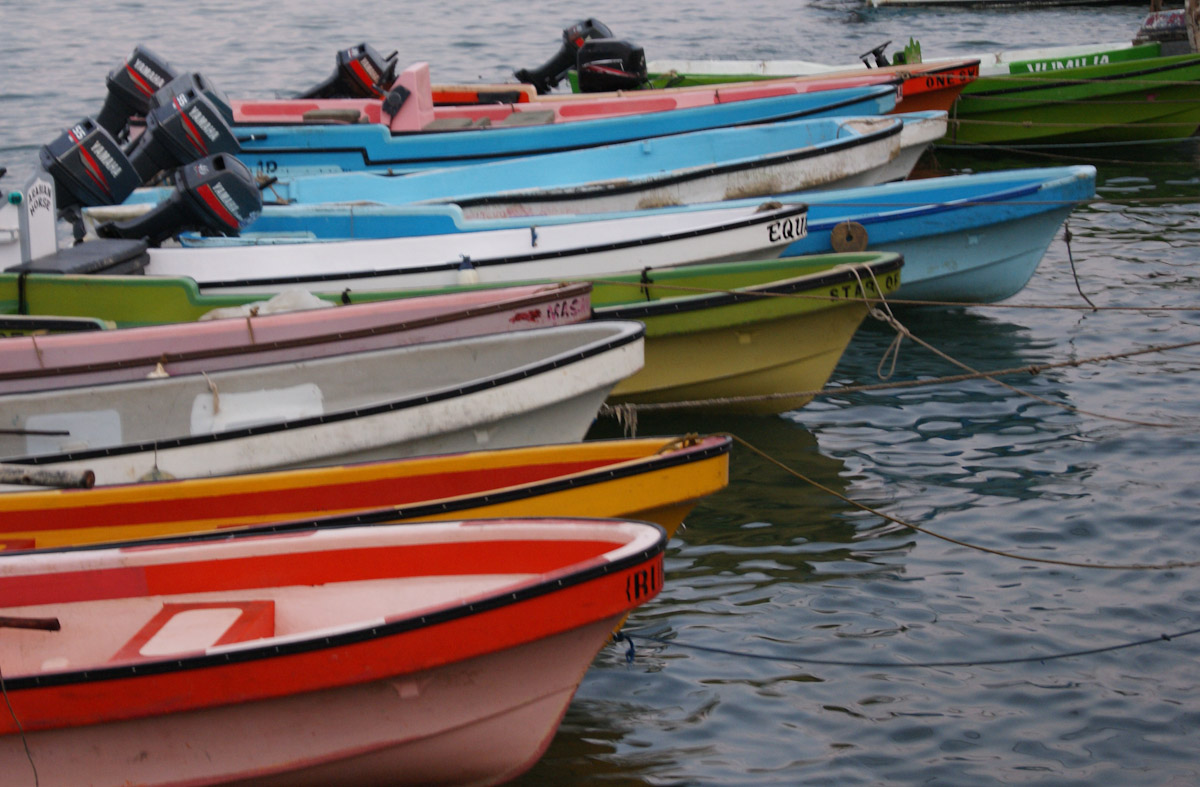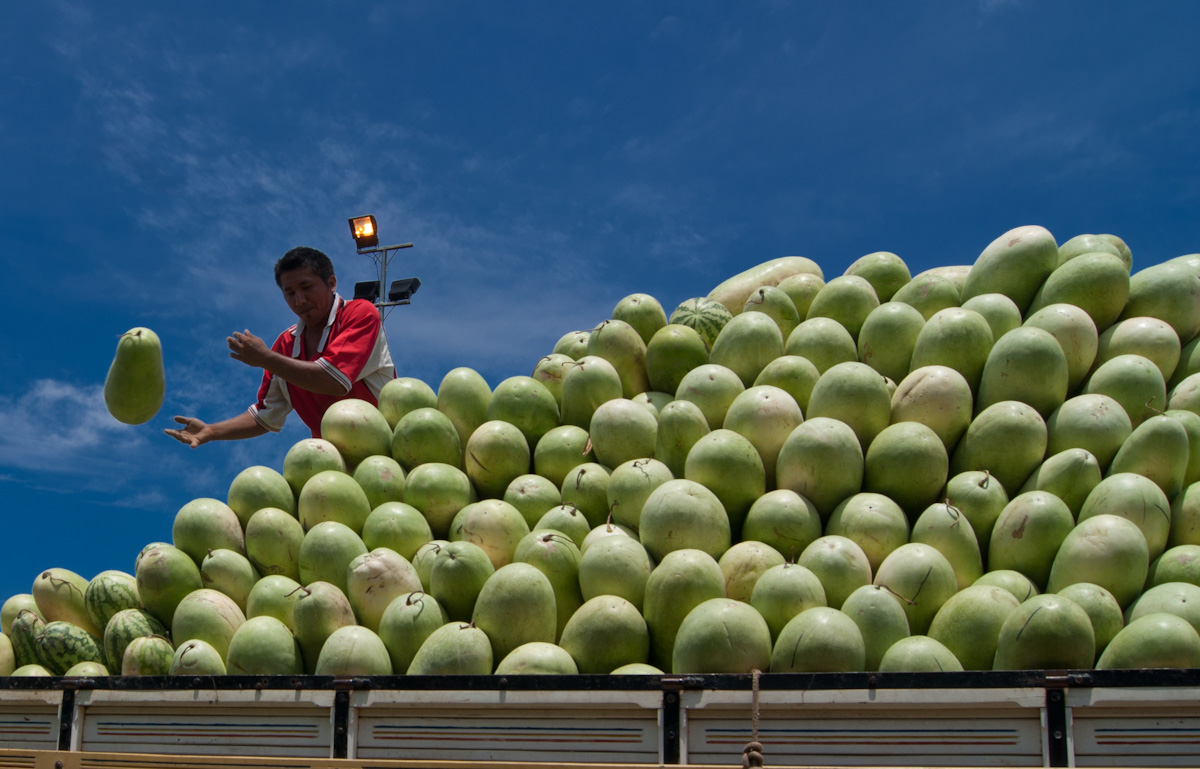Malacca is a tiny seaside town in Malaysia that was a simple fishing village before it was converted to a port due to its accessibility from the Straits of Malacca. This was in the 1400s. Along came the Portuguese in 1509, having set sail from Goa, to stamp their dominance on the Asian trade route by conquering Malacca. That however, didn’t last for long because the Dutch forged an alliance with a Malay Sultanate and ousted the Portuguese after a long 6-month siege. 150 years passed before the Dutch eventually handed over this colony to the British. Malaysia (along with Malacca) finally declared independence from the British in 1957.
Mainly due to this colonial juggling, Malacca is distinctly different from the rest of Malaysia. To this very day, the Dutch, Portuguese, British, Chinese and Malay cultures are visible in splashes all across this unique city. No wonder that Malacca has been added to the UNESCO’s list of World Heritage Sites.
If you ever find yourself in this part of the woods, here’s what would be worth your time in Malacca..
Taming Sari
This monstrosity can only be described as an architectural brain-fart, since it was constructed bang in the middle of the old town. But maybe I’m being a bit too harsh. If you can get past that, a trip on this revolving tower gives you a good idea of how big Malacca actually is. It’s easy to spot the old city gradually giving way to the new with the age-old Malacca River meandering through the town.
Tri-rickshaw Ride
 Old Malacca is tiny and has tiny roads with beautiful old colonial houses on either side and with the scorching sun above, the best way to explore the old city would be on a tri-rickshaw. Of course, if you’ve never ridden a tri-rickshaw before, just the sheer novelty of the experience is reason enough.
Old Malacca is tiny and has tiny roads with beautiful old colonial houses on either side and with the scorching sun above, the best way to explore the old city would be on a tri-rickshaw. Of course, if you’ve never ridden a tri-rickshaw before, just the sheer novelty of the experience is reason enough.
Stadthuys & Christ Church
Historically situated at the City Centre, Stadthuys translates to Town Hall in Dutch. This is also deemed to be the oldest surviving Dutch building in the East. It is now a Museum of History and Ethnography. Christ Church is the oldest Protestant Church in Malaysia and is over 250 years old.
St Pauls Church
One of the few Portuguese structures that survived the Dutch, St. Pauls Church is famous for having housed the tomb of St. Francis Xavier before his body was transferred to Goa, where it still remains, put on display every 10 years. After the Dutch conquest, it was used as a burial ground. Tombstones are scattered all across this monument.
Malacca River
Brown by day and black by night, this isn’t a typical postcard river. The dirty brown colour comes from the sediment carried by the Malacca River, being deposited in the sea. A peaceful river cruise is an option, but sitting by the side of this river at night is just as beautiful.
Maritime Museum
Driving around Old Malacca, it’s impossible to missing this old galleon stranded on dry land. The Maritime museum is housed within this ship and beautifully illustrates the history of one of the most important Asian ports in the Colonial era.
Pasar Malam
 Once the evening kicks in, Chinatown is at the centre of all activity. It plays host to the daily Pasar Malam or night market. You’ll find crowds of locals and tourists wandering aimlessly though with all sorts of knick-knacks on display. Also on offer is an amazing range of Malay and Chinese street food. The food here is another reason why Malacca is so different from the rest of Malaysia. Be sure to try out some mouth watering Peranakan food and if you’ve got the stomach, some Portuguese-Eurasian devil curry.
Once the evening kicks in, Chinatown is at the centre of all activity. It plays host to the daily Pasar Malam or night market. You’ll find crowds of locals and tourists wandering aimlessly though with all sorts of knick-knacks on display. Also on offer is an amazing range of Malay and Chinese street food. The food here is another reason why Malacca is so different from the rest of Malaysia. Be sure to try out some mouth watering Peranakan food and if you’ve got the stomach, some Portuguese-Eurasian devil curry.
The Mayans predicted that the World would end on 21 Dec 2012 (scarily precise for a civilization that used hallucinogenic drugs on a daily basis). Given this extremely relevant piece of questionable trivia, you’ve got 2 options.
The first option, and this is the logical option, would be to wait until the 22nd of Decemeber to point a finger at your gullible friends and laugh. This might not be the right option if patience isn’t your greatest virtue. Option 2 is to grab 2012 by the neck and live like there’s no tomorrow. For starters, waistlines be damned. Go ahead and order that cheesecake that’s been staring at you all evening. While this anarchist sentiments running high, you might consider getting out of your little rabbit hole and traveling the World.
If you’re not a travel freak looking to escape at the slightest opportunity, here are a few excuses you could use to justify this end-of-the-world induced travel to yourself and to your non-believer friends.
1. Diving
Take the plunge. But suit up before you do so. Be it Brazil, Thailand, Egypt, Indonesia or a plethora of other places, underwater tourism is the way to go. With the ability to move in all 3 planes, diving is like flying in slow motion; except that the view’s much nicer. Light below the water distorts in ways that we aren’t used making for a trippy surreal experience.

2. Volunteering
If you’d like to see how the rest of the World lives, but at the same time would like to save the World (despite the Mayan’s morbid prediction), volunteering is the way to go. Whether you’re a teacher or a financial consultant, tons of organizations are waiting for people like you to sign up and share your skills with the rest of the developing World. From Cambodia to India to Mali, you could get out there and make a difference in somebody’s life.
3. Safari
Safari is a Swahili word that means journey. If you’re ready to take your life’s journey to the great outdoors, then Africa should be your first stop. From breathtaking plains that nurtured early humans to humongous sulphurous lakes that lie at the bottom of silent volcanoes, Kenya, Namibia, Ethiopia will spoil you for choice. Rest assured, your adventure here will be a memory that even time will not erase.
4. Mountain Climbing
Stand beside a tall mountain and you’ll feel insignificant. Climb a tall mountain and you’ll feel invincible. To get in touch with your true self, head to the mountains. Here you will find peace, joy, suffering, solitude and maybe even enlightenment. If Mount Everest sounds daunting, try Mount Fuji or how about that tall hill behind your house.
5. Marathon
This option is not for the faint of heart. 42.2 kms has the ability to crush your spirit. However, if you do survive, the elation that takes control at the end of a race is addictive. So powerful is this emotion that people the world over travel hundreds of miles to Tokyo, New York, London and countless other obscure places to join in the only sport that involves thousands and thousands of participants. If you ever need to feel a connection with humanity, a marathon is where you need to be.
So whether it’s a wild safari or a life changing volunteer placement, 2012 is a new chance you’ve got to get out there and live your life to the full. May the force be with you.
A 50km boat ride from Phuket, Thailand gets you to large brown rocks sticking out of a greenish blue ocean. Rumour has it that this formation hides what is arguably the best beach in the World. Ko Phi Phi is a group of islands comprising of Ko Phi Phi Don, Ko Phi Phi Leh and a couple of other islands that don’t amount to anything more than large brown rocks sticking out of a greenish blue ocean. Just to put things in perspective, the largest island Phi Phi Don is too small to have any roads and so cars don’t exist here. Walking anywhere on the island takes a breezy 10 minutes and wheelbarrows form the only means of mass transport.
Maya Bay on Phi Phi Leh came into the spotlight with the movie – ‘The Beach’. The movie was an international hit but did stir up some controversy on the island. Locals claim that palm trees were airlifted onto and off the island causing extensive environmental damage. Hollywood of course vehemently denies all such allegations. Regardless of whatever environmental damage was or wasn’t done, one clear effect that this movie has had is to have tourists flock to Ko Phi Phi as technology challenged people would flock to an iPhone5 launch.
Even if Maya Bay was at some stage the best beach in the world, the overflowing speedboats endlessly zipping in and out of the bay, ensures that it’s far from the serene beach we saw in the movie. Fortunately there’s more on offer. Sign up for any of the dive or snorkeling trips and you’re sure to visit exotic beaches that will give you everything you’ve ever wanted from a beach, and more – white sand, blue water, breath-taking cliffs, leopard sharks, green turtles, etc etc. And once you’ve had you fill, sit back, relax and enjoy the beautiful sunset.
All this hard work definitely helps with the appetite. If you’re looking for a ticket to culinary heaven, Thai food is the way to go. But you already know that. For those willing to take a walk on the wild side, Ko Phi Phi’s Viking Cave is famous for one of the most expensive animal products consumed by humans – edible birds nests. Cave swifts build their nests out of saliva during the mating season. These birds’ nests are harvested and cooked into a soup that is a delicacy in Chinese cuisine. White birds nests retail at $2,000 per kilo with red nests selling for as much as $10,000 per kilo.
The Earth is a sphere rotating around the sun. There is no up and there is no down. However, history has forced us to define the north as up with the south below. This dates back to the time when the North Star was used for navigation. All maps were drawn with reference to this star and the north was placed at the top of the map as a result. Before this North Star episode, all maps were drawn with the East at the top or in other words, they were oriented to the East. And hence the East is known as the Orient.
But what happens if we throw caution to the winds and flip this map on its head?
Looks wrong doesn’t it?
We’ve been so desensitized to recognizing Countries on a World map that it requires a drastic phase shift for us to see the World for the distribution of land across its surface. From this view, Europe looks far less significant than the gigantic Asian landmass and Africa can’t be written off as a poor Continent that everyone ignores.
Psychiatrists have concluded that our fickle human brains are usually fooled into believing that up is good and down is bad. I’ll leave the science behind that to the experts. However an implication of this thinking is that we assume that the good Countries are to the North and the Countries South of the Equator are considered not as good. This bias towards the north is so strong that the historic ‘Blue Marble’ photo taken from the Apollo 17 had to be flipped because it was taken with Africa on the top with Europe below it.
Since most of the Worlds population lives in the North, most of our references and assumptions are based on living in the North. For example, Christmases must be cold, snowy and white. Barbeques at Christmas (an Australian tradition) are ridiculous. I’ll leave you with a Caribbean song that beautifully illustrates this Northern Hemisphere bias.
Merry Christmas.
http://www.youtube.com/watch?v=W6UDO91QDIQ(thanks to the Caribbean Music King for this awesome find)
Street Music at Anjuna Beach, Goa
Anjuna comprises of tiny, peaceful stretches of brown beaches hidden between rocky cliffs. Sitting at one of the quirkier restaurants along the edge of the ocean, dinner was interrupted by a pair of French travelers singing (or busking) for their supper. What ensued was a remarkable trip back into the 1950s..
Describing Goa as having quite a few Churches would be an understatement. For instance, asking for directions in Goa would result in horrible directions with references to either a Church or a bar or most likely – both.
Goa stands apart from the rest of India because it was a tiny enclave ruled by the Portuguese while the British ruled the rest of India. Even as Gandhi was driving the British up the wall, the Portuguese empire in Goa remained unperturbed and relatively peaceful. In fact the Portuguese outlived the British and ruled over Goa for 451 years. It wasn’t until 19th December, 1961 that the Portuguese were unceremoniously kicked out by the Indian army with one of the shortest wars in the history of the World that barely lasted for a day.
Time has healed many of the wounds of colonialism and most people have forgotten the price they paid for freedom. The only memory of the Portuguese that remains are the beautiful Churches and houses that are scattered across this tropical paradise. Churches or even buildings of this stature have not been seen ever since in Goa.
Just as a one eyed man is king among the blind, a few Churches in Goa stand taller than the rest, displaying the magnificence and exuberance of this Portuguese colony at its zenith.
#1. Se Cathedral (1619)
Se Cathedral is one of the largest Churches in Asia and is dedicated to St. Catherine. Built to commemorate the victory of the Portuguese over the Muslim rulers of Goa, it took almost 80 years to build. Legend has it that the Golden bell of this Cathedral could be heard all over Goa. One of the bell towers was destroyed during a lightening storm leaving the Church with a unique asymmetrical structure. Don’t judge a book by its cover as this Church contains 14 alters on the inside, with each being more intricately carved than the next.
#2. Bom Jesus Basilica (1605)
Apart from its unique baroque architecture, this Basilica is significant to the Goans since it holds the mortal remains of one of the patron Saints of Goa – St. Francis Xavier. Francis Xavier died on board a ship and his body was taken to Malacca, also a Portuguese colony at that stage. It was later decided that he should be buried in Goa. On the arrival of his body in Goa, more than 2 years after his death, people noticed that Francis Xaviers body hadn’t decomposed. The Church has deemed this to be a miracle and St. Francis Xaviers body is put on display to the public every 10 years (next being 2014). A silver casket designed in the 17th Century holds the remains of this Saint.
#3. Church of Our Lady of the Immaculate Conception (1541)
One of the oldest Churches in Goa, this Church is located at the centre of Panaji, the Capital City. The Church towers over the City with a statue of Mother Mary at the front casting a watchful eye over its inhabitants. Originally built to welcome sailors home, the Church is over 450 years old and is beautifully preserved. The Church is used even to this very day with devout Catholics stopping by to pray en route to work.
#4. Church of St. Catejan (1700)
Defying the norms, this Church was built by a few Greek and Italian priests at the turn of the 17th Century. This Church was modeled on St. Peters Basilica in Rome and stands in start contrast to the rest of the Churches built in the Portuguese era. Despite being over 300 years old, the structure is well preserved, presumably due to the lack of tourist attention to this masterpiece.
#5. Church of St Francis of Assisi (1661)
Built at the back of the Se Cathedral, this Church has large shoes to fill. Stepping into this Church takes you back in time and beautiful painted panels depicting the life of St. Francis of Assisi adorn the walls. The seminary adjoining this Church has been converted into a peaceful art museum that houses most of the painting earlier placed at the Panaji Secretariat.
The Runner Up – Our Lady of the Mount (1547)
Despite being relatively modest compared to the other Churches, there’s nothing modest about the view from the hill on which this Church was built. The Church could be so much more but currently stands abandoned and left to the elements. However, even for just the view, this Church is worth a visit.
Have you ever packed your bags in a hurry and then left home with an awful feeling of having left something behind? If not, are you the kind of person who packs an extra pair of nail clippers in case you misplace the first? Either ways, packing a backpack is more art than science. Haphazard packing is easy to ignore over a weekend trip but over a month long vacation, it could literally drive you insane.
I distinctly remember franticly scrambling around on the eve of several holidays debating whether shower gel was necessary (it’s a valid concern) only to forget my toothbrush in the process. I have also gone through ‘let’s pack everything but the kitchen sink’ phases that ended up with me carrying the world on my shoulders, praying fervently every morning for my holiday (and pain) to end.
Over the years I’ve attempted to transform my backpack packing ritual into a distinct process that makes it a bit more difficult to mess up.
Assumptions
Secretly hoping that Lady Luck will shine on your backpack, allowing it to miraculously overcome the trials of cheap travel unscathed would be naïve. The reality is…shit happens.
Make peace with the following assumptions and you’ll be well on your way to having a better holiday.
- Your bag will be mistreated
- Your bag will get wet
- You will have to carry your backpack for 2 hours straight
Ground Rules
Plan for the worst and hope for the best. In order to ensure that your backpack survives the atrocities committed against it, a few counter measures at the outset are crucial.
Use dry bags for everything – Your clothes, documents and electronics should be safely tucked away in dry bags (or storm bags) so that come rain or any water related mishaps short of the great flood, they’ll survive.
Pack compact heavy items first – Packing compact items first at the bottom of your backpack ensuring that the load is close to your spine. This greatly helps while carrying around your backpack. Softer items on the outside will ensure that the heavy items don’t have any wiggle room.
When in doubt, leave it out – Given that you’re going to have to lug this backpack around for days on end, it would be wise to pack light. Throw away the heavy duty sleeping bag, boots, aftershave and all unnecessary creature comforts. As for expensive stuff, ask yourself – will you cry if you lose it?
Buy as you go – Shampoo, shower gel, deodorant, etc. are inexpensive items that are capable of causing huge disasters if let loose in your backpack. One strategy to avoid this is to pack none and buy these items once you get to your destination. Give yourself a pat on the back since you’re also being a nice guy / gal and supporting the local economy.
Never pack to capacity – Dirty laundry has the uncanny knack of expanding when repacked into your backpack. Additionally, souvenirs that seem weightless and miniscule when purchased eventually gang up and fight for precious backpack real estate. Packing your bag to 80% capacity gives you plenty of room to improvise as you roll.
The Stuff
Your stuff should fit into the following 4 categories.
1. Clothes
Warm weather packing should never require more than 5 pairs of t-shirts, shorts and underwear. Cold weather can be slightly trickier. Dressing in layers will help you get away with fewer heavy warm clothes. Irrespective of where you go, packing more than 1 pair of jeans is indefensible – they’re heavy, bulky and painful to wash.
2. Shoes
For most purposes, 2 pairs of shoes should suffice. One nice pair that can be worn to dinner and a pair of floaters. Although boots do feel good, unless you’re planning to do some hiking, stay away from them like the plague. My latest favorite in the shoe section is a versatile pair of Vibram Five Fingers that can be used for running, hiking and are probably lighter than your thongs (Aussie slang for flip-flops…what were you thinking?).
3. Toiletries & First-Aid
Most of the stuff required here is pretty straightforward. Just stay away from heavy and dangerous glass-bottled colognes and you’ll be fine. Try and keep the hypochondriac in you in check while packing a first aid kit. Even better, buy one from the nearest pharmacy.
4. Electronics
Electronics have the capability of making life a lot easier. However, it still is a crime to pack an electric shaver. Don’t miss a trick here. A Kindle can inexpensively and effectively replace bulky books forever. I never leave home without it. Add to that a smart phone, pocket camera, pen-drive and you’re pretty much done. If you’re a DSLR person, you’ve got no choice but to silently endure. As for the age-old laptop dilemma, you’re going to have to take a personal call on that one.
Other than sunglasses, I can’t for the life of me think of anything else that doesn’t fit into the top 4 categories. If you do find something, do let me know what it is. And I hope you’ve got a damned good reason for taking it along.
Packing Technique
The biggest mistake you could make while packing a backpack is by rushing to fill all your stuff into the bag. Resist the urge to dump everything into your bag. Lay out your junk out on the floor beside your bag first. Is there anything missing or unnecessary here?

Now, bring out dry bags (or even simple plastic bags) and pack your stuff into modules. This helps with packing, unpacking and keeping things organized.

Loading the packs into the bag is a piece of cake and will take less than a minute.

And with that….we’re off to see the World!
 A few months ago I packed my bags and hitched a ride across the Guyana border into Brazil. I walked into Boa Vista with a sense of accomplishment, having gotten this far without any hiccups. The sky may as well have fallen on my head when I realized that no one spoke any English. This wasn’t what I expected. The locals seemed to be quite content with jabbering in Portuguese. Travelling alone, I was left with little option but to spend my first day in Brazil without speaking a word of English. What ensued in the following weeks was a mad scramble to pick up some basic Portuguese for survival.
A few months ago I packed my bags and hitched a ride across the Guyana border into Brazil. I walked into Boa Vista with a sense of accomplishment, having gotten this far without any hiccups. The sky may as well have fallen on my head when I realized that no one spoke any English. This wasn’t what I expected. The locals seemed to be quite content with jabbering in Portuguese. Travelling alone, I was left with little option but to spend my first day in Brazil without speaking a word of English. What ensued in the following weeks was a mad scramble to pick up some basic Portuguese for survival.
History
As always, there’s some good news and there’s some bad news. The good news is Portuguese is a Latin based language and English has a lot of Latin influence too. So many words do overlap. The bad news is that although Portuguese uses the same alphabet as English, the pronunciation is completely different. This could be a challenge.
Pronunciation Basics
A is ah
E is eh
I is ee
O is awe
U is oooh (as in oops)
Rules Designed to Confound and Confuse
An mentioned earlier, pronunciation can be tricky at times. A few examples below.
- The letter r sounds like the word h if its at the beginning of a word. If its in the middle of a word, its an even stronger h. If its at the end of a word, its silent.
- S when used at the end of a word becomes a z. For all other practical purposes, it’s still a s
- The letter h at the beginning of a word is silent. However if it follows an l (lh) or n (nh), it then mysteriously becomes a y. Bet you didn’t see that coming.
- G takes on a zh sounds when followed with an e or an i. Think Zsa Zsa.
Since most of this isn’t necessary for survival, we diverge. On to the fun stuff.
The Essentials
Obrigado / obrigada – Thank you (depending on whether you’re a male / female)
Desculpa – Sorry
Por favor – Please
Quanto? – How much?
Nao entendi – I didn’t understand
O banheiro, por favor? – The bathroom, please?
How you doin’?
Ola / oi – Hi
Bom dia – Good morning
Bom tarde – Good afternoon
Boa noite – Good evening / night
Chau – Bye
Ate mais – See you
Tudo bem / Tudo bom – How are you? (both equivalent to ‘wassup’)
If someone asks you Tudo bem? say Tudo bom. If it’s Tudo bom? answer back Tudo bem. Don’t waste any time trying to figure out the logic. Move on.
Pronouns
Eu – I
Voce – You
Ele – He / him
Ela – She / her
(Until you master this, bathroom usage will be tricky)
Numbers
| 1 – um | 11 – onze | 10 – des |
| 2 – dois | 12 – doze | 20 – vinci |
| 3 – tres | 13 – treze | 30 – trente |
| 4 – quarto | 14 – quatorze | 40 – quarenta |
| 5 – cinco | 15 – quinze | 50 – cinquenta |
| 6 – seis | 16 – dezeseis | 60 – sessenta |
| 7 – saiche | 17 – dezesete | 70 – setenta |
| 8 – oito | 18 – dezoito | 80 – oitenta |
| 9 – nove | 19 – dezenove | 90 – noventa |
| 10 – des | 20 – vinci | 100 – cem |
Money
Once you’re down with the numbers, a few more words to your vocab will ensure that bargaining is a breeze. Although the currency is spelt as Real (plural Reais), it is pronounced hey-ah-oh (plural hey-eyez). Another strange aspect is that decimal points don’t exist. Ignoring the far reaching implications of this to high school math, R2,85 would translate to dois reais e oitenta e cinco centavos. Drop the e’s to improve your speed. Once you’re out of cash, ask around for the caixa automatico coz an ATM just doesn’t sound cool enough.
Food
Tons of quilo (kilogram) restaurants are splashed all around town. These places encourage you to gorge yourself on a buffet with a million things on offer. You pay depending on the weight of your plate. In case you’re a vegetarian, you’d better memorize this phrase – Tem pratos vegetarianos? (do you have vegetarian dishes?) Results though are not guaranteed. Vegetarianism is to the Brazilians as religion is to the birds.
Don’t make the rookie mistake of overeating and not leaving any space for the sobremesa (dessert). Brazilian sobremesas are to die for. Request for a conta (the bill) once you’re done. If you’re at a nicer restaurant, thrown in a por favor for good measure.
Drinks
Chope – Beer
Agua – Water
Café – Coffee
Chá – Tea
Leite – Milk
Açucar – Sugar
Limao – lime
While in Brazil be sure to get your hands on a few Caiperinhas which are delicious cocktails made with limao, açucar and cachaça (sugarcane rum).
Note: 3 caiperinhas are powerful enough to make a priest dance on a barstool.
Directions
Onde fica _______ is your friend. It means ‘where is ________’ and can be used anywhere, for anything and anyone. Too easy..
Phrase of the Day
Que legal (cool)
Divided, these words might be powerless. But together, and with a few exclamation marks thrown in at the end, they can be used to respond to any possible scenario under the sun. Ignore them at your own risk.
Simple Sentences FTW
O meu nome é _______ (My name is _________)
Voce fala inglez? (Do you speak English? Pointless but what the hell!)
Eu falo Inglez – (I speak English, in Portuguese. Very classy)
Before people attempt to strangle you with their bare hands, make a smooth exit.
Por Favor, onde fica o banheiro?
Located on the border of Kenya and Somaliland, Lamu greets visitors with a half tarred road and a few potholes for an airstrip. However, you’re not allowed to complain coz “This is Africa” (common saying when thing’s go wrong). And, given that the bus is regularly hijacked by Somali land pirates, the flight’s definitely a safer option.
Lamu is one of the earliest Swahili settlements and served as an important trading port in an erstwhile era. Influences of Indian and Arab cultures are evident even today from Indian songs playing in the streets to Arab dhows (sailboats) dotting the coast. Set foot in Lamu and it’s quite apparent why this is a town that time forgot about. Houses are ancient and built within a few feet from each other to save people from the wrath of the scorching sun. Add to that the fact that the only means of land transport on the island is a fleet of shiny new donkeys. After all according to an ancient Swahili proverb ‘A man without a donkey, is a donkey’.
Apart from the great seafood, exotic fruit juices, tiny roads and hoardes of donkeys, Lamu has a lot more to offer and you’ll find that 3 days in Lamu is far from sufficient..
Lamu Fort
Although the fort itself is nothing to write home about, the view from the ramparts ensures that the fort is well worth a visit. Since it stands right next to the town centre, it offers a great unobtrusive view of the happenings at the the town centre. Great way to pass the time on a lazy sunny afternoon.
Lamu Museum & Swahili House
Both of these buildings house well-preserved Swahili artifacts that give you a peek into the past offering you a clear picture of what life was like in the good old days.
Sunset Dhow Trip
It would be a crime to visit Lamu and skip a dhow trip. The boat sets off from Lamu at around 4pm and you get to view the sun set over the Indian Ocean with dhows scattered all across the orange water. The boat then drops you at a deserted beach where the boatmen build a bonfire. Definitely a unique experience that will not be easily forgotten.
Manda Island
Manda Island is Lamu’s sister island. Although the island was inhabited a few hundred years ago, the lack of drinking water on this island forced people to move to confine themselves to Lamu. An additional risk of setting up shop on Manda is the elephants that are known to incredulously swim across from the Kenyan mainland to feed at Manda Island. Ruins of a mosque at Manda have been preserved until today. If the local fishermen are to be believed, Manda beach provides a good vantage point to view Somali pirates making their way in their tiny dinghies to the office.
Shela Beach
Sun, white sand, blue water. That’s exactly what Shela beach is all about. If you’ve had enough of the tiny streets of Lamu, Shela beach is a short 15 mins walk away. If walking isn’t your cup of tea, most of the boats will be more than happy to ferry you along the coast. This is probably one of the few beaches in the World with camel rides on offer. Imagine an ant walking around on a ping-pong table and that’s exactly how you would feel in comparison to the vastness of Shela beach.
Manaus sits at the mouth of the Amazon, where the Rio Branco (white river) merges with the Rio Negro (black river). Since Manaus is the largest city in this gigantic rainforest, all Amazon exploration starts and ends here. Tourists flock here in hundreds of thousands every year and since the industry is geared towards luxury travel, trips into the forest tend to burn a hole in the wallet. Having spent a day in Manaus earlier in the year, I decided to go back and see what this crazy city was all about. With a limited stash of $$$, there was little choice but to ignore the extravagant tours and get creative.
Swim with river dolphins – USD 50
The Amazon is large enough to sustain a diverse habitat and as a result, it’s the only river that plays home to river dolphins. The pink-bellied river dolphins are a curious species with funny customs. Courtship involves males diving to the bottom of the river and picking up rocks in their jaws. Size does matter and the dolphin that picks up the largest rock wins the female’s affections. A one-hour boat ride up the Rio Negro takes you to dolphin land. Humans (with fish treats) are treated as friends. The dolphins playfully swam around us and occasionally, much to my discomfort, nibbled harmlessly at my knees. Creepy.
Take a waterfall tour – USD 50
With most tourists going gaga over the prospect of trekking through the Amazon, the waterfall tour is a hidden gem. Over 85 waterfalls are splashed around Manaus. Many locals frequent these waterfalls over the weekend so if you head over on a weekday, you’re practically guaranteed a private audience with one of nature’s most destructive forces. If you work up the courage (I couldn’t), you could join the local lifeguards and try body surfing (no lifejackets, no body boards) down one of the more popular, relatively milder rapids.
Explore the local market – Free
Walking through the local market, you’ll notice that fruits and vegetables take on an alien look in Brazil. From watermelons bigger than footballs to a yellow fruit that tastes like a nut, Manaus has it all. Come Sunday, the centre of town gets cordoned off for a large Sunday street market; a great place to let loose the hidden shopper within.
Get some culture at the Teatro Amazonas – Free
Built in 1896, at the height of the rubber boom, the Teatro Amazonas is modeled on the Opera house in Paris and is a sight to behold. Magnificent from the outside, the theatre is massive on the inside with intricate carvings and painting on the walls and ceilings. Beauty and rubber extravagance aside, the best part is that most of the concerts at this theatre are free. Easier said than done though, because half the population of Manaus queues up for most shows an hour before the doors open. However, a few passion fruit caiperinjas (available outside the theatre) should ease the discomforts of sitting on the cobblestone street.

















